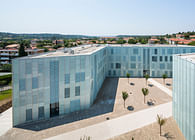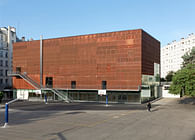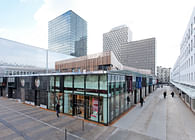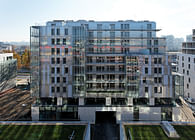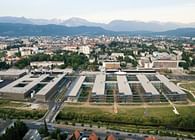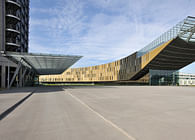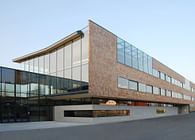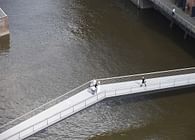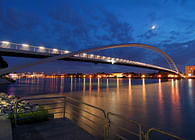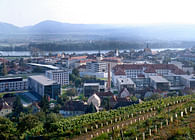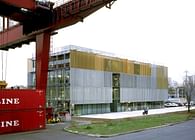
Montreuil, FR | Wien, AT
Extracts from a text by Mathias Boeckl / Architektur Aktuell / September 2006
The latest bridge across the Seine in Paris is an experience in terms of construction. It also conveys new perceptions of the city in a number of different, rhythmically interwoven levels and, in a highly poetic manner connects two new districts of the city.
The success of the concept of this passerelle is most probably based primarily on the astonishingly simple structural solution that offers manifold unexpected additional features, the greatest degree of elegance, and complex possibilities of interpretation and use. It is its urban planning qualities that lend it additional value.
Feichtinger has not merely achieved the normal connection of two points but has instead linked six points. Both banks of the Seine are stepped in three levels: at the lowest is the quay, above that the street level and at the very top the park and the platform of the National Library. In the competition Feichtinger did not only suggest connecting the street levels (as was required in the brief) but proposed linking two levels on both sides of the river with his passerelle. He has thus meshed the walks between four points and has made it possible to avoid crossing the city motorway running along the river that separates the banks of the Seine from the adjoining areas of the city. There is now a direct connection from the park to the National Library, without having to change street level – a most useful additional amenity. From street level – the lower of the two bridge levels – you can reach the lowest level – the quay or the water level – by steps or ramps. On either side a lift connects all three levels with each other. This layering also corresponds with the new urban
planning goals of the district. For in the future the Seine (that here expands to form a basin 150 metres wide and 700 metres long) is , like the inner-city watercourses in many other European cities, to be used as a new leisure time facility. This facility will include a floating swimming pool that is at present docked near the bridge, as well as diverse temporary water events that will be held on the Seine.
An additional feature of Feichtinger’s design is that it will be possible to watch such events from the new bridge like from a spectator stand, as at the centre it is twelve metres wide.
In purely visual terms the most striking aspect initially is the enormous unsupported span of the bridge (194 metres) – it has a total length of 304 metres, which is exactly the height of the Eiffel Tower – with an extremely slender, almost filigree structure. Feichtinger appears to achieve this classic aesthetic ideal of modernism without effort and (for this very reason) in a most fascinating manner, by providing the routes taken by the users almost entirely through his structural solution, using hardly any other elements – apart from the primary structure – that have a visual impact. The most brilliant idea was the sophisticated combination of a suspension structure with an arch that penetrate each other. The suspension structure consists of steel bands that are a maximum of 10 or 15 cm thick and that on either bank are spanned over two ‘boomerangs’ and then vanish vertically into the ground. By the use of hydraulic dampers – high tech appliances each of which cost half a million euro – the vibrations are controlled at the far ends of the bridge.
Status: Built
Location: Paris, FR
Firm Role: Head Designer
